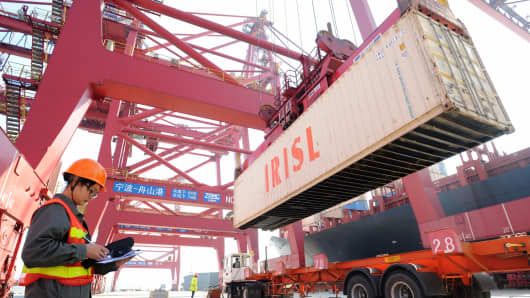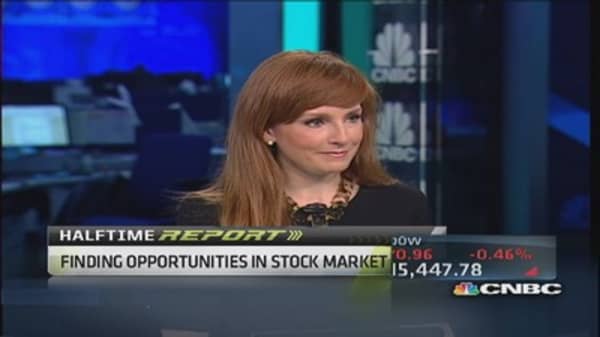China posted stronger-than-expected trade figures on Thursday, the latest in a string of upbeat data and raising hopes that the world's second biggest economy may be stabilizing.
Exports rose 5.1 percent in July, compared to a Reuters forecast of a 3 percent rise, and much better than the 3.1 percent fall in June.
Meanwhile, imports jumped 10.9 percent in the month, versus expectations of a 2.1 percent rise and following the 0.7 percent drop in June.
Trade surplus came in at $17.8 billion, compared to forecast of $27.2 billion.
(Read more: China market bounce: trend change or false alarm?)
The data triggered swift reaction in the markets.The Australia dollar rose 0.9 percent to $0.9073, while shares in Hong Kong and China rose 0.8 percent and 0.5 percent, respectively, before reversing some of the gains in the late session.
"China trade data for July indicates a rebound of external demand and a re-surgence of domestic demand," said Dariusz Kowalczyk, senior economist and strategist of Asia ex-Japan at Credit Agricole told CNBC.
"All this confirms our view that the economy has bottomed out and will re-accelerate in the second half. We'd like to call the end to worries over China for this year," he added.
The trade figures are the first in a flurry of economic data this week that investors hope will show continued signs of improvement in China's economy.
(Read more: China tourism set for a boom like Japan in the 80s)
The government's twin Purchasing Managers' Index (PMI) reports for the manufacturing and non-manufacturing sectors for July in the past week both came in better than expected, raising hopes that the slowing economy may be getting some of its growth mojo back.
But Alistair Chan, economist at Moody's Analytics, say the numbers reflect similar trade conditions back in April, so it's more a "return to normal conditions" than a bounce.
"At the end of the day exporters are still having to contend with weak global demand, and the currency is quite strong as well so I don't think it's going to be much upside for exports to this year," he said.





